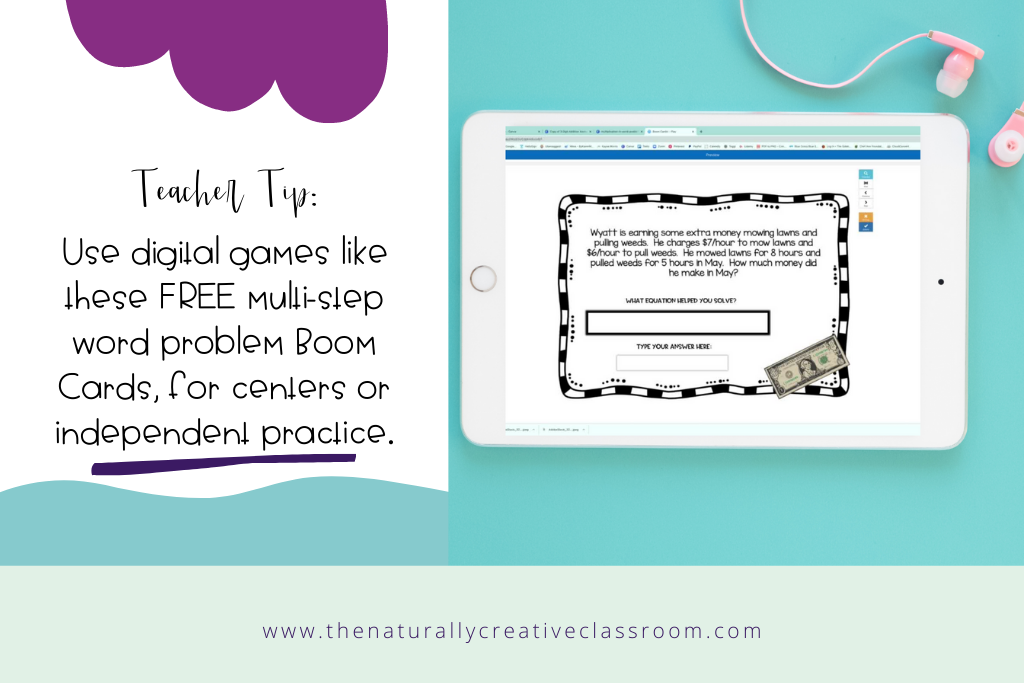Grab your FREE Multi-Step Boom Cards
Practice word problems in math in class or at home! These free boom cards will get you on your way to making math fun!
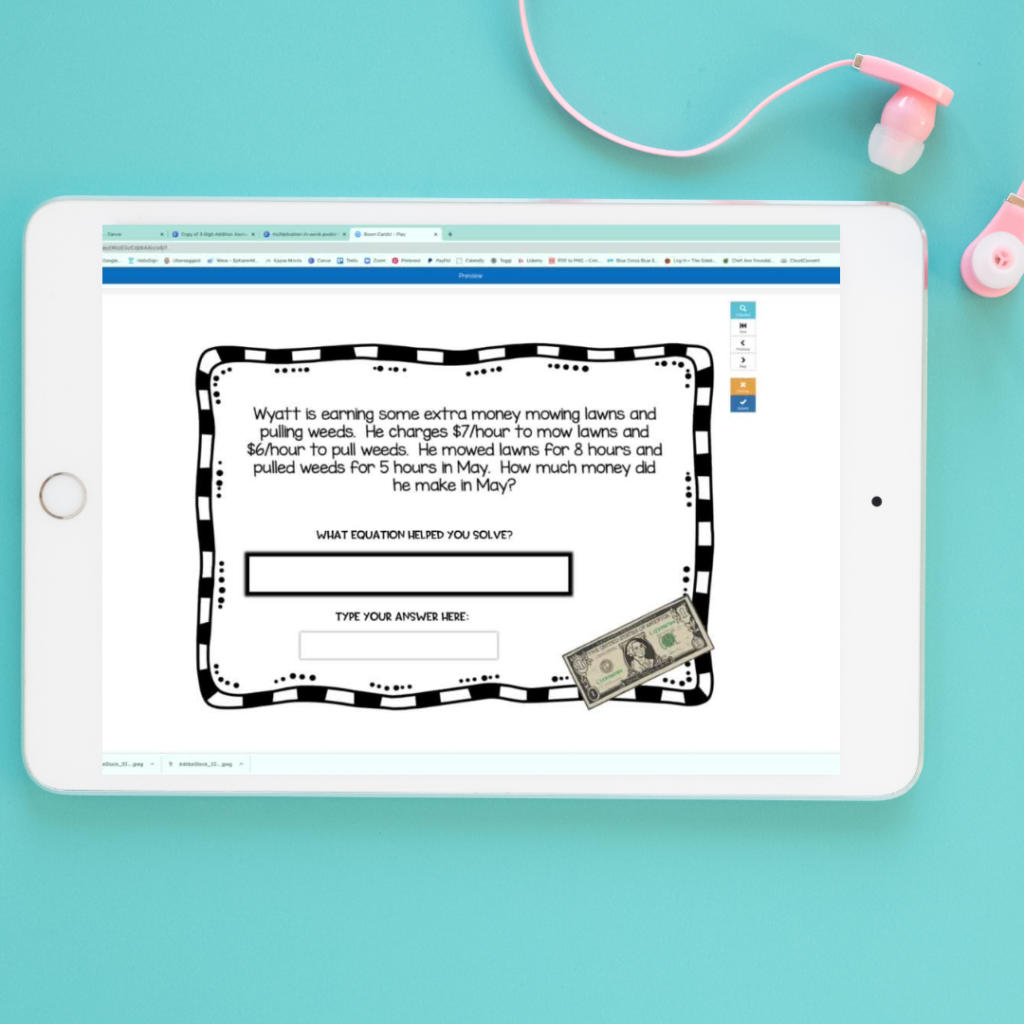
This post contains some affiliate links.
You will be a better teacher than any math word problem solver app
You CAN do word problems for 3rd grade! When your child brings over their word problems in math worksheet and asks you for help, resist the urge to say “word problems hard” and dive back onto your phone. Don’t search for a word problems calculator or a free app that promises to solve word problems instantly.
Instead, recognize your math anxiety, grab a stress ball, take a deep breath, and know that you will be a better teacher to your child than any of the apps or programs (yes! For real!).
Let’s get YOU some word problems help! Even though it may be difficult, following this mantra will save time and disappointment because, when you get to the promising app, you will find that you need to have ready the equation you need to solve. It will take reading comprehension and understanding the problem to find the correct equation for word problems.
Adjusting your attitude about word problems in math
The first step in helping with word problem worksheets has nothing to do with actually solving problems. If you are like most people, you suffer from some degree of math anxiety based on your experience with word problems in math, or maybe you think you know how to do word problems until your student tries to show you how their teacher asked them to do it. That’s OK!
Recognize your math anxiety and your student’s math anxiety. Remind yourself and your child that you will get better the more you try and that you will both make mistakes. No one is born great at anything; it takes time and practice to develop skills in any area. Parents pass down their math attitudes to their children, so it’s essential to be as positive as you can.

Make Homework Time Based
You may also want to try thinking about your student’s homework differently. Make it time-based instead of task-based. Making homework time-based means setting a timer (I love this visual timer) and have them work on the problems for a set amount of time. As long as they are genuinely working, allow them to stop when the timer goes off.
As a teacher, the very last thing I want is a student (and parent) ending up in tears over a homework assignment. The “rule of thumb” is to spend ten minutes for every grade level on homework. When assigning work that should take 30 minutes, I always think, “Whose 30 minutes? The kid who flies through it in 5, or the kid who struggles with it for an hour?” Of course, if your student is enjoying the work, they can work longer!
Making word problems on addition and subtraction time-based evens the playing field.
For example, if your student is in third grade and has both spelling and math to complete, they should do 15 minutes of spelling and 15 minutes of math if they give their homework a good try and only successfully complete one problem, awesome! If a child is struggling, I always tell parents to jot a note on the homework, tuck it into the folder and stop for the day. Dragging out the work will only worsen attitudes.
What to say when your child asks for help with word problems
Try changing the way you respond to your student because negative math attitudes are easily passed on and reinforced, your words and attitudes about math matter.
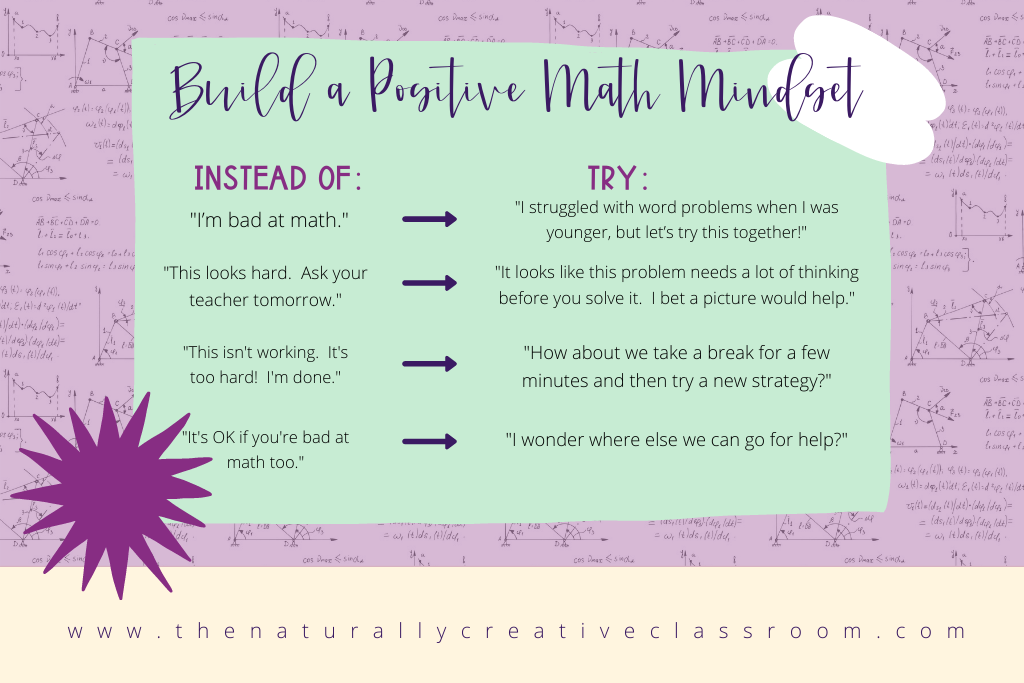
Using these words will help you and your child develop a growth mindset towards math. A growth mindset means that you believe that you will get better at math with practice, persistence, and time. You and your child will be more willing to engage in the productive struggle, sit with a problem longer, and develop the thinking skills it takes to be an effective problem solver.
Be Less help solving word problems math
Yes! You read this correctly, be less helpful. This one comes in handy when we know exactly how to solve a problem and want to jump in and just do it for them. I totally get that impulse! My son recently came to me for help with multiple step word problems for 3rd grade, and I have taught third grade. Of course, it would totally be easier to do it for him or walk him through step by step.
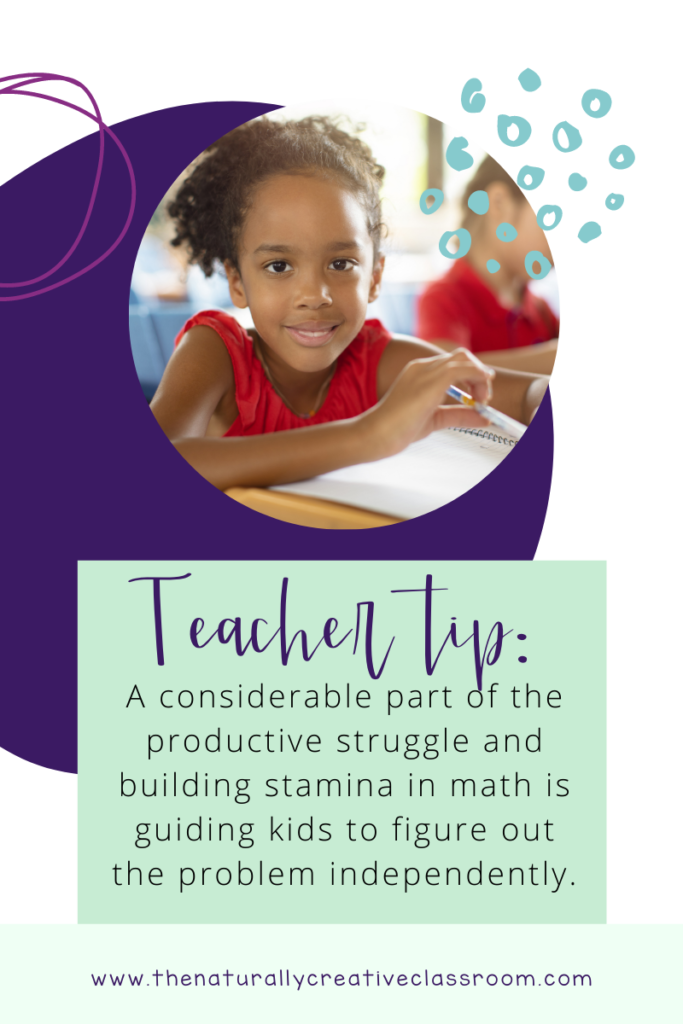
A considerable part of the productive struggle and building stamina in math is guiding kids to figure out the problem independently. I always refer back to this questioning funnel from the book Whose Doing the Work? By Jan Burkins and Kim Yaris. This book targets reading comprehension, but it is also applicable to word problems in math (remember how word problems require reading comprehension?). Using questions such as these, you will guide students to do the thinking and find the answers independently.
Let me show you what this looks like with a sample problem.
Example of solving word problems with multiplication
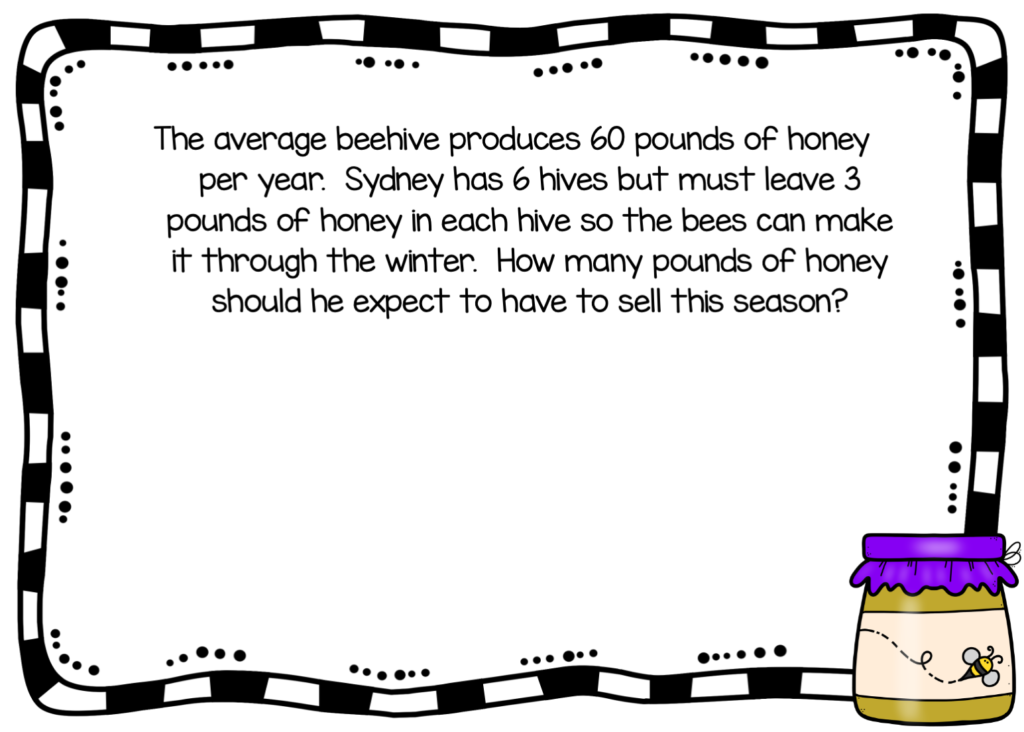
When solving a problem like this, I always first ask, “What do you need to know”? This will be the final question: “How many pounds of honey should he expect to have to sell this season?”
Next, I will ask, “What do you already know?” and ask them to write it down. This question is beneficial when solving word problems 2 step equations. It will help them sort out their thinking. Here, we know that:
*1 beehive = 60 pounds of honey
*There are 6 hives
*Each hive needs 3 pounds of honey for the winter
*Syndey wants to sell what is left
Questions to Encourage Independence
Do you notice how I have asked my student to do the thinking for each step? By using these types of questions first and resisting the urge to tell them the answers, the burden of doing the work falls on them. If, after using these questions, your student is still struggling, you can use more specific questions further down the funnel:
*What does the problem tell us?
*What does the problem tell us about beehives?
*Reread the problem
These types of problems may be frustrating for your student (and you!) at first, but give them plenty of time to think and stick with it. Over time, it will become easier.
Turn word problems into equations with the tape diagram
For the third step, I ask, “What can you try?”. There are various word problems strategies such as guess and check, draw a picture, use a number sentence, use objects, make a table, find a pattern and make a list. This list is not a complete list of strategies, and a quick google search will come up with many, but I am still a fan of “Read, Draw, Write.” These instructions are simple: Read the problem, Draw a picture, Write your answer. It is a good bet that their teacher asked them to draw a picture using a tape diagram.
You probably never learned how to draw a tape diagram in school, but this is a tool that is widely used today and applies to every step of this example problem. When you understand the tape diagram, you can make it your go-to for writing equations with word problems.
Breaking Down Word Problems with Multiple Steps



The first step to solving this problem is figuring out how much honey is in 6 beehives. Here is a photo of how the tape diagram would look. This is a part+part = whole diagram and can be used to find how much “in all.”
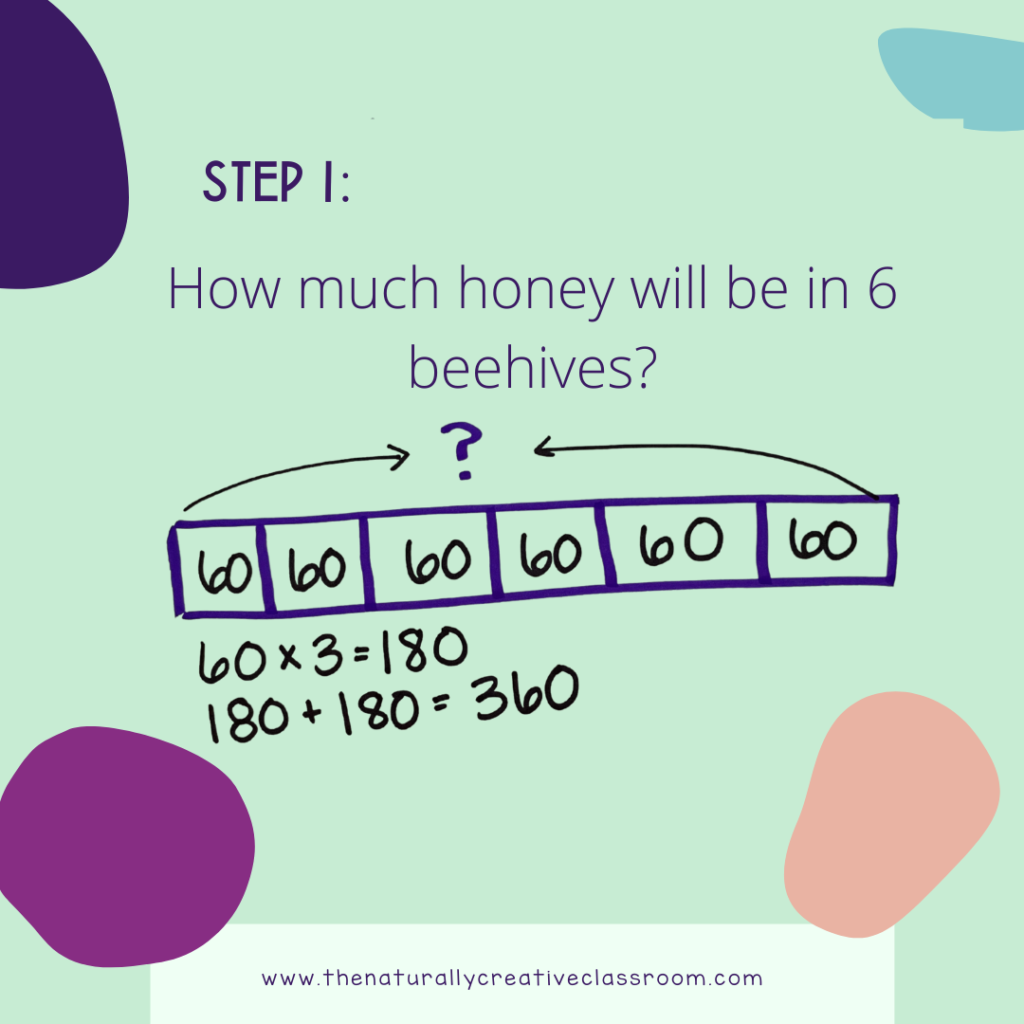

Step 2 of solving this problem is to figure out how much honey the bees need for the winter. We will use another part+part= whole tape diagram.
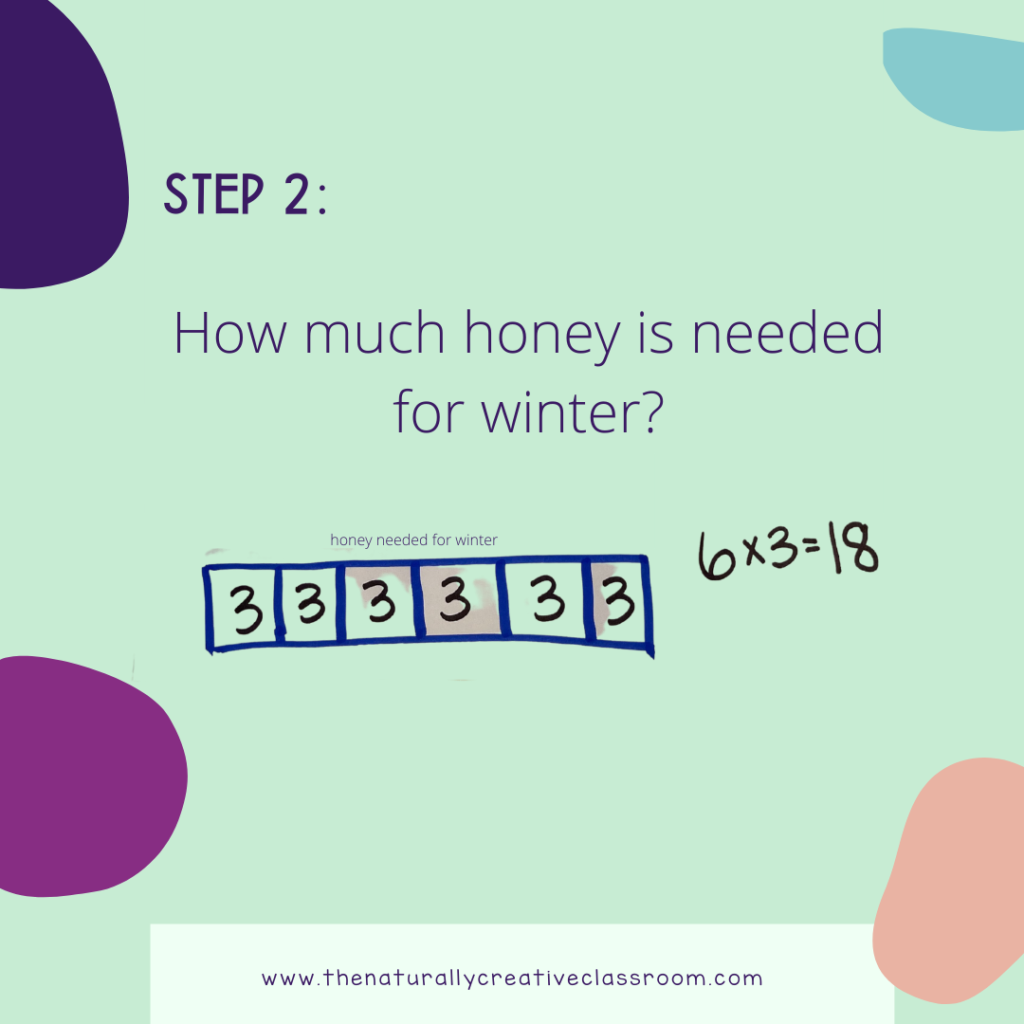

To complete step 3, we will compare the two diagrams to find out how much honey is left when we subtract the amount of honey needed for the winter. This type of diagram is used in part + ? = whole problems.


For step 4, we are now going to write the equation for word problems
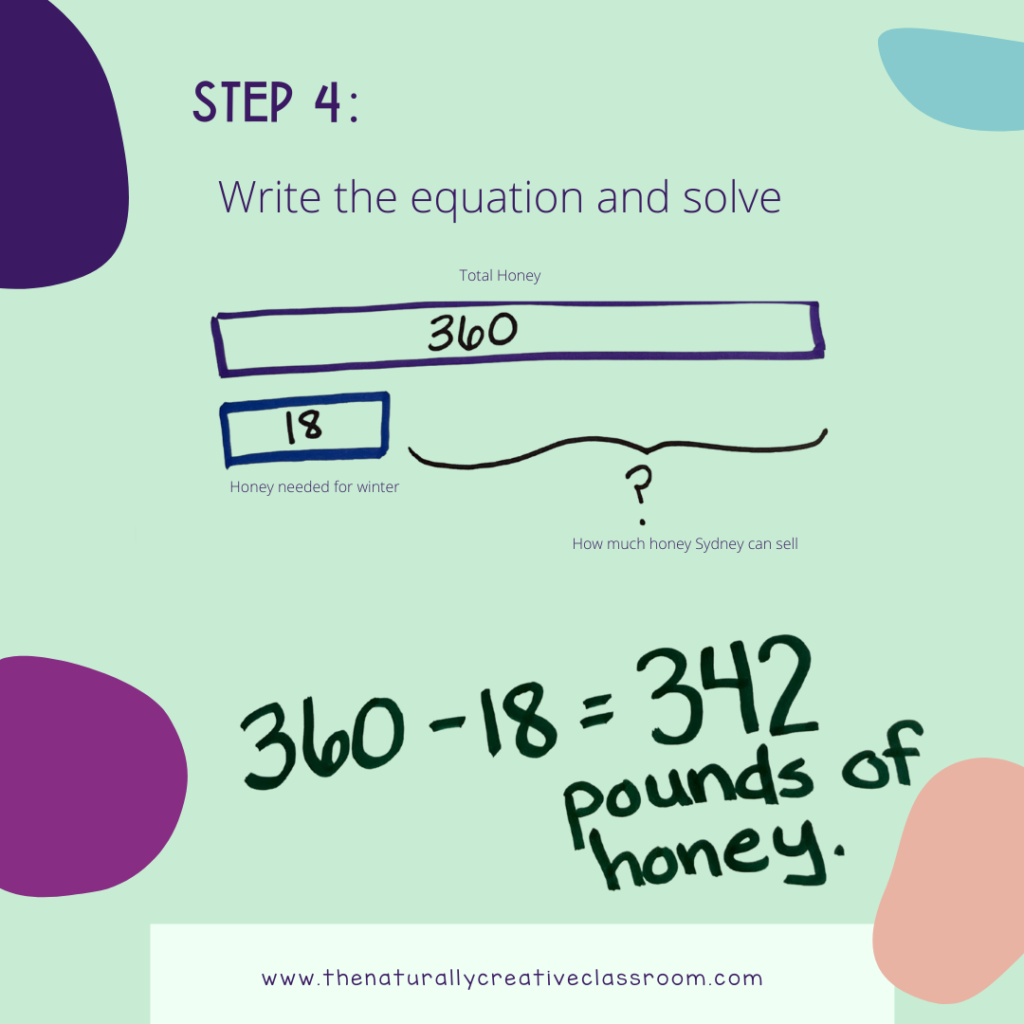

360-18= ? or 18 + ____= 36-
360-18= 342 pounds of honey
Step 5 will be checking the word problems in math answer to be sure it makes sense. Ask your child, “Does this make sense?” If they say “yes,” ask them, “How can you check?”. To check this problem, they will need to check that 18+342=360. If it does, they will know that they did it correctly!
You can find more instructions on tape diagrams here!
Learn more addition strategies here. Try some of the subtraction strategies found here.
Don’t Depend on Word Problems Key Words
Well-meaning teachers sometimes teach students to look for word problems keywords. While these keywords can have their place, you will notice that they don’t show up in the word problem above. When students are taught to rely upon these keywords instead of critically thinking through the problem, they may stop and struggle with what to do next. Keywords can prove to be particularly crippling during a high-stakes test.
Another problem with word problems in math keywords is that they sometimes lead the student to do the wrong operation. Often they will slide through the problem, grabbing the numbers and then doing whatever operation matches the keywords they were taught. For example, students are often taught that the words “added” and “how many more”:
7 pencils were on the table. Kinley added some more, and now there are 14 pencils. How many more pencils did Kinley add?
In this case, “added” is supposed to be an addition word, while “how many more” is subtraction. 7+14 will not solve the problem, but it is what students are lead to do if they depend solely on word problems clue words.
Where to Find More Help
If you try these steps and are still stumped with word problems in math, don’t worry! I’ve got your back!
Here are three resources you can use if you need help figuring out your student’s worksheet for word problems.
- Eureka Math (Engage NY)– Many districts use this free curriculum in their classrooms. It comes with Parent Tip Sheets that align with each unit. If your child’s school has purchased the extra materials, ask the teacher for a copy of the Homework Helpers! You can find them here.
- Khan Academy has videos and practice for every math standard. You can set up a free account and browse the library by topic or standard.
- Zearn is another free site that is more visually appealing. You can set up a free account and go through lessons.
Grab these free Multi-step word problem Boom Cards to practice word problems 3rd grade. These word problems are also excellent word problems for 4th grade practice! These multi-step word problems include problems for all operations.
